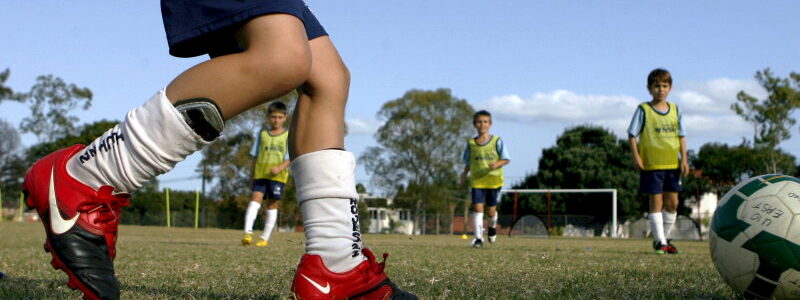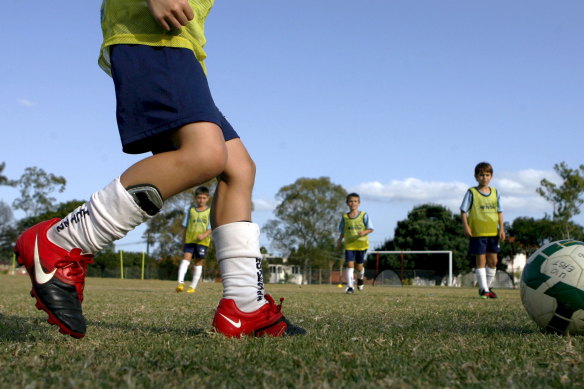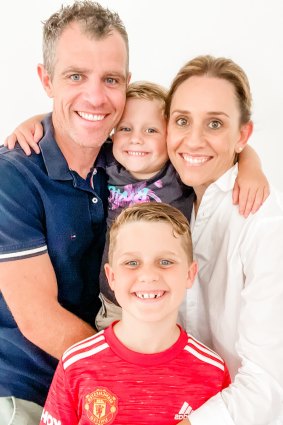
$7000 a year: Costly after-school activities weighing on family budgets
Parents are having to dig deep to send their children to soccer practice, ballet class or piano lessons as the rising cost of living puts further strain on family budgets.
Nationally, parents pay $3.8 billion a year for after-school activities, equating to $1859 a year per activity per child, according to Mozo research. Piano lessons average $1319 a year, while horse riding lessons add up to $3280 to the annual budget. In some instances, activities increase in cost over time as kids pick up new skills and move into extra classes.
Parents are having to dig deep to send their children to after-school activities like soccer practice.Credit:Wolter Peeters
Sport is particularly popular outside of school. AusPlay data from 2021-22 shows 47 per cent of children aged 0-14 participate in organised out-of-school sport or physical activity at least once a week at a median cost of $572 per year.
But the data also shows a dip in participation rates, attributed to the increased popularity of video games and other sedentary activities, the rising cost of sports equipment and fees, and the lack of access to facilities in some areas.
Brisbane mother-of-two Carolyn Tate ferries her 12-year-old son to jujitsu classes and rugby league practice during the week, while her 10-year-old daughter attends dance class. Aside from the cost of weekly classes, she also pays for uniforms, dance outfits, competition fees and tickets.
“The costs in a year are around $5000, give or take a sequinned leotard or a pair of footy boots,” Tate says, who splits the costs with her ex-husband.
But it’s worth it. “Extra-curricular activities and having a community outside of school fortifies kids, building their social circle and giving them an identity outside of school,” Tate says.
However, her experience with her eldest child, now 18, tells her that the costs creep up over the years as children get more heavily involved in their hobbies.
“But I’m happy for them to do what they want. I figure it’s way better than them sitting at home on their iPad or staring at the TV. If they’re active and passionate about something and enjoying themselves, I’m happy to fund it,” she says.
Sarah, Matt, Harry, and Jack Hodges.
Sydney’s Lindsay Cumming spends $7399 on extracurricular activities for her two children, aged three and six. She ferries them between ballet, jazz, tap, performance ballet, performance jazz, piano, swimming and soccer. She accesses government vouchers where possible to recoup her costs.
She admits it’s expensive but says the additional classes give her children a well-rounded education and support for their passions.
Costs can quickly add up for families. It’s not just the lessons, but uniforms, shoes and travel to events and performances that can be costly, according to Popi Sotiriadou, an Associate Professor of Sport Management at Griffith University.
She says anecdotal evidence suggests that the cost of sport is on the rise, which is likely to see a drop in enrolments.
“Families are counting the pennies and it’s going to be nearly impossible to prioritise sport against the backdrop of the rising cost of housing, groceries and everything else,” Sotiriadou says, adding that digital tools that encourage family and friends to pitch in for sport and using government incentives such as the Active Kids vouchers in NSW can help bring the cost down.
Gold Coast mother Sarah Hodges forks out around $2000 yearly in after-school activities for her two boys, Harry, eight, and Jack, five. They play soccer and football and her eldest participates in club cycling. Experience tells her that progression in sports tends to cost more.
“It’s a significant amount of money. We’re not talking about the kind of money that means we’re just deciding not to go out for dinner this week. And you can’t really pull them out of sports once they’ve made that commitment,” she says.
“But the boys have so much energy when they get out of school, and we know that team sports are so good for them. We both feel that it’s an incredibly important part of raising well-rounded young men.”
- Advice given in this article is general in nature and is not intended to influence readers’ decisions about investing or financial products. They should always seek their own professional advice that takes into account their own personal circumstances before making any financial decisions.
The Morning Edition newsletter is our guide to the day’s most important and interesting stories, analysis and insights. Sign up here.
Most Viewed in Money
From our partners
Source: Read Full Article

